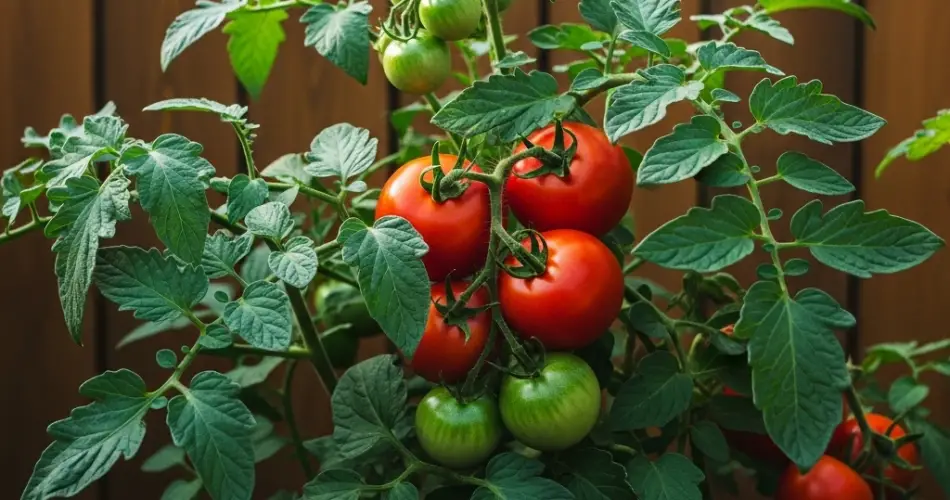Growing tomatoes at home is a rewarding experience, and with the right techniques, you can multiply your tomato plants quickly and successfully. In just five days, it’s possible to have hundreds of healthy tomato plants thriving in containers by following careful pruning, propagation, watering, and staking methods.
This article guides you through the essential steps to get the most out of your tomato plants when growing in pots or urban gardens.
Pruning Tomato Plants for Better Growth
Proper pruning is key to encouraging strong, productive tomato plants. By removing unnecessary stems and leaves, you focus the plant’s energy on producing healthy fruit and prevent overcrowding that can invite pests and diseases.
How to prune tomato plants:
-
Remove the suckers — these are small shoots that grow in the crotch between the main stem and branches. Pinching these off early directs energy toward the main stem and fruit production.
-
Cut away yellow or damaged leaves to improve air circulation and light penetration.
-
For indeterminate tomato varieties, regular pruning encourages a manageable size and better airflow, reducing fungal risks.
Pruning also makes it easier to manage watering and fertilization, as the plant becomes less dense and more accessible.
Propagating Tomatoes Through Cuttings
One of the fastest ways to increase your tomato plants is by rooting cuttings. This method lets you produce many plants from a single parent, saving time and money.
Steps for propagating tomato cuttings:
-
Select healthy, vigorous stems about 6-8 inches long.
-
Remove the lower leaves, leaving only a few at the top.
-
Place the cuttings in water or directly into moist potting soil.
-
Keep them in a warm, bright spot but away from direct harsh sunlight.
-
Roots should develop within 5 to 7 days.
Once roots form, transplant the cuttings into pots with fresh soil. This propagation technique allows rapid multiplication of your tomato plants.
Watering Tips for Potted Tomato Plants
Tomatoes require consistent moisture, especially when grown in containers, as pots dry out faster than garden beds.
Effective watering practices include:
-
Water deeply but less frequently to encourage roots to grow downward.
-
Avoid overhead watering to minimize fungal problems; instead, water at the soil level.
-
Monitor soil moisture daily, especially in hot weather or when plants are fruiting.
-
Use mulch on the soil surface to retain moisture and regulate temperature.
Proper watering reduces stress on plants, preventing issues like blossom end rot and fruit cracking.
Supporting Tomato Plants with Stakes and Cages
Tomato plants can become heavy with fruit and prone to bending or breaking if unsupported. Using stakes or cages keeps the plant upright and improves airflow around the leaves and fruit.
How to stake or cage tomato plants:
-
For staking, place a sturdy wooden or metal stake near each plant and gently tie the main stem to it using soft ties or cloth strips.
-
For cage support, place the cage over the seedling early on, allowing the plant to grow within its structure.
-
Regularly check ties and supports to adjust as the plant grows.
Supporting tomatoes prevents ground contact, reducing the risk of rot and pest damage, and makes harvesting easier.
Growing Tomatoes Successfully in Pots
Tomatoes thrive in pots if you use the right container size and soil. Choose pots at least 12 inches deep with drainage holes to prevent waterlogging.
Use a high-quality potting mix rich in organic matter, and fertilize regularly with balanced nutrients to support flowering and fruiting.
Placing pots in sunny spots—ideally with 6 to 8 hours of direct sunlight daily—ensures plants get enough light to grow and produce fruit.
Quick Recap: How to Get Hundreds of Tomato Plants in 5 Days
-
Prune your tomato plants to promote healthy growth and fruit production.
-
Propagate new plants by rooting cuttings in water or soil.
-
Water properly to keep soil moist but well-drained.
-
Support plants with stakes or cages to avoid damage and improve yield.
-
Choose the right pots and soil for optimal growth.
By combining these practices, you can multiply your tomato plants quickly and maintain a productive urban garden.
Final Thoughts
Whether you’re a beginner or experienced gardener, following these simple yet effective techniques will help you produce a large number of healthy tomato plants in a short time. Pruning optimizes plant energy, cuttings allow rapid multiplication, proper watering keeps plants vigorous, and staking ensures plants grow strong and upright.
With patience and attention to detail, your home-grown tomatoes will flourish, giving you bountiful harvests throughout the growing season. Experiment with these tips, and watch your urban garden transform with hundreds of thriving tomato plants in just days!



